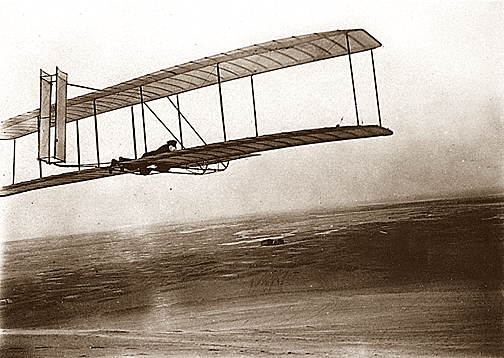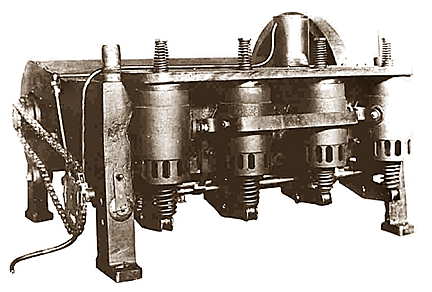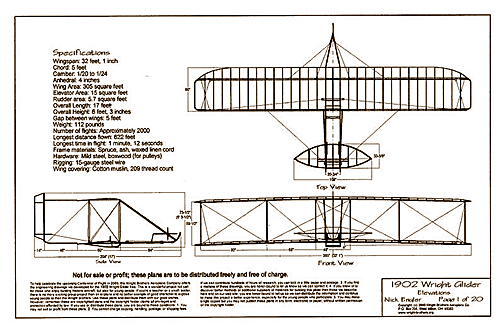|
 By
1902, the Wrights were at the brink of powered flight. They had mastered two
of the three conditions necessary, having designed wings capable of
sustaining a craft in flight and a control system that allowed them to
maintain balance and execute turns. By
1902, the Wrights were at the brink of powered flight. They had mastered two
of the three conditions necessary, having designed wings capable of
sustaining a craft in flight and a control system that allowed them to
maintain balance and execute turns.
The brothers believed the addition of an engine to be the
easiest part of solving the powered flight problem. All they needed was a
motor built to their specifications. And as for a means of converting their
engine's power into forward thrust, they could learn from information on
marine propellers. Once they knew the theory behind marine-propeller design,
they could adapt it to moving through air.
They were badly mistaken on both counts. Wilbur wrote over
10 engine manufacturers saying he needed an engine that would deliver 9
horsepower, weigh no more than 20 pounds per horsepower, and run free of
vibration. All said they couldn’t deliver such an engine. As for the
theory behind marine propeller design, there was none. Propeller designs had
always been arrived at through trial and error.
 The Wrights would have to build their engine and
propellers from scratch. The Winter of 1903 turned into a series of
engineering hurdles as challenging as any they'd ever faced. The Wrights would have to build their engine and
propellers from scratch. The Winter of 1903 turned into a series of
engineering hurdles as challenging as any they'd ever faced.
Luckily,
they hired Charlie Taylor, an accomplished machinist, as an assistant in
their bicycle shop. Taylor eventually made most of the engine parts himself
from crude drawings on scraps of paper. A belt-driven drill press and a
lathe were all that he had to work with.
To save weight, the Wrights used an engine block made of
aluminum, cast at a local foundry. Taylor bored the engine's four cylinders
on the lathe. He made the pistons himself, too.
As always, aerodynamics concerned the Wrights. They
planned to mount the radiator, built in a vertical configuration, separate
from the engine on the central forward upright of the airplane and attach
the long, thin gas tank, holding four-tenths of a gallon, behind a strut
near the upper wing.
 Their engine performed better than expected, delivering a
surprisingly steady 12 horsepower. They knew they could fly. Their engine performed better than expected, delivering a
surprisingly steady 12 horsepower. They knew they could fly.
The Wrights didn't have the time to test a variety of
propeller designs. With no tools other than pencil and paper, they had to
take a complex practical problem, express it in mathematics, and come up
with an answer–the best propellers for their particular engine and
airframe. They gave themselves one chance to build a single set of
propellers.
By April 1903, after three months of filling five
notebooks with calculations, the Wrights were able to design two narrow,
wooden, slowly rotating propellers nearly eight and a half feet long which
would provide enough thrust for their craft. They mounted them behind the
wings as pushers, spinning in opposite directions, so that the that the
machine wouldn’t be pulled to one side.
Though the Wrights' engine may have had a homemade
feel to it, their propellers were beyond state of the art.
Next: The Fateful 1903 Season
|
